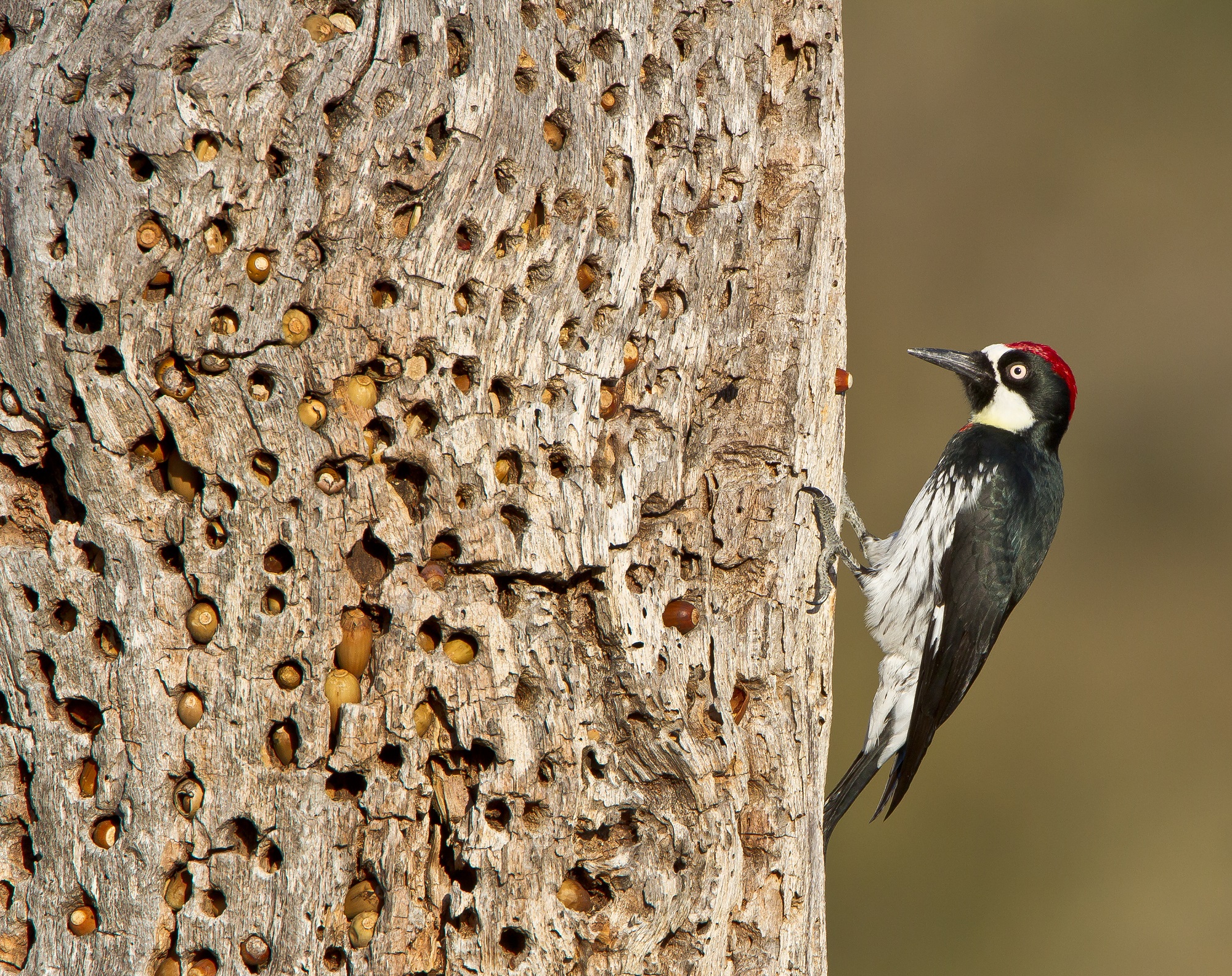

Picture this: You’re hiking through a redwood forest in Northern California, and you stumble upon a towering trunk with tens of thousands of acorns drilled into it. You might think it’s some Satanic ritual, but in reality, it’s the handiwork of an 8-inch-long woodpecker and its kin.
In fact, it’s what acorn woodpeckers are best known for—they assemble these “granaries” for food storage over generations and centuries, says Sahas Barve, an evolutionary biologist who studies the species with the Smithsonian National Museum of History. And it’s not a one-and-done affair. The caches must be maintained over time to keep dried-out acorns screwed firmly in their holes and rivals like squirrels away.
The oddly decorated tree is just one example of how acorn woodpeckers work together with family members to increase their odds of survival. In a paper released in Proceedings of the Royal Society B this week, Barve and other bird researchers dug into the species’ intricate cooperative breeding strategies.
Co-breeding is a common behavior in the animal kingdom where three or more adults will help raise offspring. There are 800 to 900 bird species that use this system, Barve says, including red-cockaded and red-headed woodpeckers. But acorn woodpeckers, which live in much of the Southwestern and Pacific US, take the strategy to the next level: Both male and female relatives (siblings, first cousins, and sometimes parents and progeny) will produce chicks with the same mate, then care for the nest and chicks together.
That means each bird makes fewer mini-mes and passes on less of its own genes in a breeding season. (Co-breeders usually switch off making babies so there’s a 50/50 split, Barve says. If there’s an odd number of eggs, the woodpeckers find a way to even the score the next year.) In the long run, however, the polygamous perks stack up.
In his study, Barve and his team traced the bloodlines of 499 acorn woodpeckers and found that co-breeding males fathered more chicks in their lifetimes than males in traditional parenting situations. “Males that joined a ‘coalition’ may get access to higher-quality territories, nest every year, and live longer,” he explains. “So they may not gain a lot every year, but cumulatively it’s better.”
Barve does note that there are costs to polygamy that are tough to calculate. But those might be counteracted by kin selection, which is the bonus of helping siblings or their offspring survive to keep some portion of your genes in the pool. “Overall, the benefits of cooperation are likely higher than we previously thought for acorn woodpeckers.”
So, if you do come across an acorn granary out west, spend an extra beat appreciating the master planners that built it. “We don’t generally consider woodpeckers as intricate, social creatures who think ahead,” Barve says. “Now we know better.”
